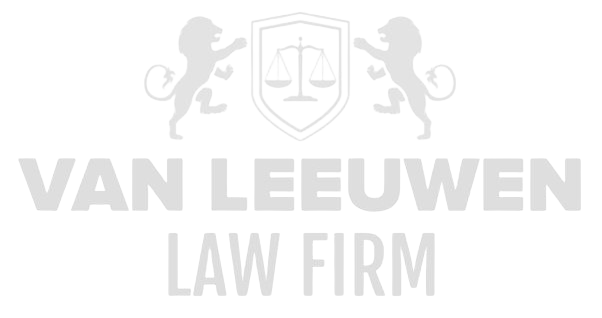The contemporary social fabric increasingly resembles a fragile, translucent veil—one that may at any moment tear apart under the strain of converging crises. Climate change, technological revolutions, and demographic shifts form a complex trinity that evokes not merely abstract concerns but tangible consequences for the foundation of social cohesion and governance integrity. Each passing day sharpens the contours of this convergence, exposing the C-suite of multinationals and financial conglomerates to a reality in which passive pledges or well-intentioned declarations no longer suffice. The world of executive leadership now faces relentless exposure to the implications of mismanagement, fraud, bribery, money laundering, and large-scale violations of international sanctions—each decision a potential minefield of legal and reputational hazards. The once-comfortable illusion of control fades, replaced by the sobering realization that behind every strategic maneuver may lie a looming legal nightmare.
This scenario is exacerbated by the ever-deepening entanglement of global markets and financial flows, in which technological innovation is both blessing and curse. Artificial intelligence and blockchain, once heralded as the holy grails of efficiency and transparency, now often serve as instruments of concealed corruption and fiscal evasion, beyond the reach of even the sharpest legal radars. At the same time, demographic pressures force executives into strategic choices that test ethical boundaries—from the exploitation of vulnerable markets to the systematic erosion of local regulation in pursuit of unrestrained profit maximization. Climate risks, from extreme weather events to the disruption of global supply chains, act as catalysts for legal and financial calamities. Within this turbulent reality, corporate leaders face a paradox: the pursuit of profit and market dominance even as the apparent stability of institutions and the rule of law slowly erodes under the weight of an increasingly complex world order.
Climate as a Legal Time Bomb
The climate crisis has long ceased to be a mere environmental issue; it has evolved into a legal and financial battleground where executives and shareholders stand in uneasy tension with the law. Every act of negligence in emission reduction, every failed sustainability strategy can now be prosecuted as deliberate deception—triggering claims ranging from shareholder lawsuits to international sanctions. Climate risk has thus become a direct instrument of accountability, with every decision involving fossil fuel investments, deforestation, or industrial expansion representing a potential dossier for fraud or corruption investigations. The C-suite is compelled to scrutinize every step through a lens of legal precision, while public opinion and NGOs tirelessly amass evidence of alleged misconduct.
This scenario grows even more complex through the globalization of the legal order, as jurisdictions vary greatly in enforcement capacity and sanction severity. Multinationals operating in weakly regulated environments risk having their actions condemned internationally as economic crime. When companies conceal their ecological footprint through intricate financial structures, such actions quickly mutate into allegations of money laundering or fraud, with both financial institutions and boards held legally accountable. The illusion that cross-border operations confer protection is a mirage: sanctions and international treaties can be invoked instantly against seemingly untouchable entities.
Every strategic decision in a climate-sensitive sector carries an inherent moral and legal tension. Investing in profitable yet environmentally harmful technologies may boost short-term returns but inevitably draws the scrutiny of regulators and international prosecutors. The question is no longer whether a company operates sustainably, but how its leadership will defend itself when sustainability is exposed as a facade. Climate risk is no longer a theoretical menace—it is a legally codified trap that executives disregard at their peril.
Technology and the Financial Labyrinth
Technological advancement offers an apparent golden pathway to efficiency and scalability while concealing a labyrinth of legal peril. Algorithms designed to optimize market analysis can equally be used to bypass internal controls, enabling fraud and corruption to be orchestrated remotely. Blockchain, AI, and automated trading platforms no longer function merely as instruments of progress but as potential weapons of financial deception and tax evasion. C-level executives confront the illusion of control over systems capable of outpacing human oversight at every turn. The legal implications are devastating: misuse of technology can translate directly into charges of embezzlement, money laundering, or complicity in violations of international sanctions.
The technological domain is saturated with ambiguity, where intention, execution, and consequence are often indistinguishable. An algorithm that inadvertently channels transactions toward sanctioned entities can generate severe liability, regardless of the board’s intent. The rapid dynamics of real-time data analysis and high-frequency trading mean that decisions once subject to weeks or months of verification now carry irreversible legal consequences within fractions of a second. Governance thus demands a perpetual state of vigilance, where even a minor technical failure may be construed as deliberate negligence or complicity in financial wrongdoing.
In an age where cyber threats and data breaches form the new frontier of corporate crime, technology emerges as both ally and adversary. Violations of privacy laws, inadequate protection against hacking, or facilitation of unauthorized transactions can trigger lawsuits that strike at the heart of corporate governance. Technology has therefore ceased to be a neutral tool; it has become a legally charged weapon constantly testing the limits of liability. It mirrors the fragile equilibrium between ambition, profit-seeking, and the constraints of legality.
Demography and the Economics of Power
Demographic transformations compel enterprises toward strategic choices fraught with both ethical and legal risk. Aging populations, migration, and urbanization alter the nature of markets and labor forces, forcing executives into a constant state of recalibration. Efforts to enter new markets or leverage cheap labor are frequently conflated with exploitation, drawing the immediate attention of international prosecutors. Violations of labor laws or discriminatory practices can swiftly escalate into broader claims of corruption or financial fraud, particularly when complex contractual structures are employed to circumvent oversight.
Demographic pressure also shapes public sentiment and the perception of corporate legitimacy. Companies that fail to manage social inclusion or fair labor practices risk reputational damage that coincides with legal exposure. The pressing question becomes whether corporate leadership can reconcile profit optimization with adherence to international standards without incurring legal consequences. When markets are approached with ethically ambiguous intentions, the boundary between lawful strategy and criminal conduct narrows dangerously, becoming increasingly indefensible in the courtroom.
Every decision involving outsourcing, expansion, or market segmentation can unleash a cascade of legal repercussions, with demographic dynamics acting as a catalyst. Regulation, social pressure, and international norms form an inescapable framework within which executives must operate. Failure to integrate these parameters into strategic planning may culminate in intricate cases of fraud, money laundering, or sanction violations, where both personal and institutional liability loom large. Demography is therefore no mere statistical variable; it is an instrument of legal and moral accountability.
Financial Integrity Under Siege
The financial arena represents the ultimate battleground where social cohesion and legal responsibility intersect. Mismanagement, fraud, and corruption are no longer theoretical risks but daily realities that keep executive leadership in a state of permanent tension. Every misstep invites international scrutiny, with sanctions breaches and money laundering standing as the most perilous offenses, drawing immediate attention from regulators and the global legal order. The C-suite is forced to manage not only financial performance but also compliance, reputation, and legal viability—an almost impossible triad.
The art of financial manipulation is subtle yet devastating. Complex transactions, cross-border mergers, or opaque tax structures can within minutes provoke suspicions of fraud or complicity in criminal activity. The perception of integrity now weighs as heavily as actual compliance with law and regulation. In an era where reputation directly equates to market value, a single legal misjudgment can unleash a chain reaction of financial and institutional collapse that no enterprise can withstand.
Failure to instill a robust culture of integrity and accountability serves as a catalyst for social and legal decay. Boards that marginalize ethics and compliance inevitably face a deluge of indictments and public outrage. The boundaries of financial experimentation and profit optimization are rigid and unforgiving, and any attempt to ignore them is punished without mercy. Social cohesion, financial stability, and legal survival are thus inseparably intertwined; failure in one dimension inevitably triggers collapse in all others.
Intersecting Crises: The Convergence of Risk
When climate, technology, and demography intersect, they produce an explosive synthesis of risk that tests corporate integrity on an unprecedented scale. It is not any single factor, but rather the simultaneous pressure of multiple crisis vectors, that creates a landscape where every executive decision becomes a potential legal and financial minefield. The convergence of these forces transforms strategic choices at the highest levels into a game of survival, where ethics, compliance, and profit maximization are locked in perpetual conflict.
In this interplay of complex forces, corruption is never far away. Climate-related subsidies, technological innovation, and demographic market strategies offer fertile ground for bribery, money laundering, and sanctions evasion. Companies that fail to monitor these dynamics rigorously find themselves sliding into a zone where prosecution ceases to be hypothetical and becomes inevitable. Any attempt to pursue apparent profit without complete legal oversight becomes a precursor to catastrophic failure.
The ultimate challenge lies in the ability to merge transparency, accountability, and legal compliance with competitiveness and profitability. The intersections of climate, technology, and demography are no longer abstract concepts—they are sharp instruments of legal scrutiny and public pressure, forcing executives into a perpetual exercise of strategic foresight. In this era of converging crises, social cohesion is no longer a given but a fragile edifice under constant assault, where each miscalculation risks inflicting irreversible damage on reputation, finance, and legal survivability.









